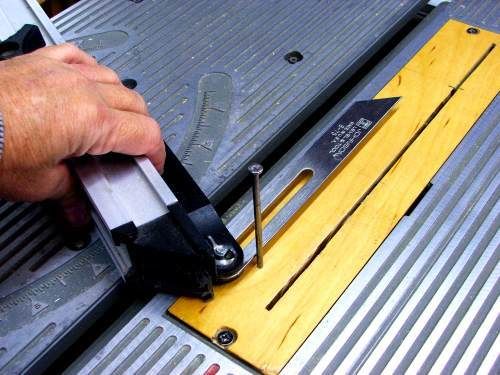I setup the blade to the miter slot, fence to the miter slot and square the miter gauge to the bar as you suggest. Works fine. Also, yet another handy use for your tilt gauge:
The pics are actually opposite of what I do but you get the idea.
Zero it on the bar Wixey-on-Miter-1.jpg
and adjust to 90* on the gauge headWixey-on-Miter-2.jpg
As long as your gauge is at 90* to it's own bar, the bar fits the slot without slop and your saw is setup to the slot . . . all is well.
"A hen is only an egg's way of making another egg".
– Samuel Butler






 Reply With Quote
Reply With Quote





 Yes, that is what I meant but not what I typed. However, a .003" gap is easily visible even to my tired eyes and a .007" gap should be visible to anyone's eyes.
Yes, that is what I meant but not what I typed. However, a .003" gap is easily visible even to my tired eyes and a .007" gap should be visible to anyone's eyes. 